THE TUCHER FAMILY’S COAT OF ARMS
The affiliation of the Tucher family to the social group of merchants (patricians) aspiring to be equal to the knighthood aristocracy, which was a higher social group, is confirmed not only by the right to delegate a member of the family to sit in the Nuremberg City Council, bestowed upon the family in 1332, but also, more importantly, by the right to use a coat of arms given solely by monarchs and only for special contribution to the country.
What is important is that a coat of arms was bestowed by the king (ruler) exclusively upon people or families that were not feudal subjects. As a rule, merchants of free cities (Nuremberg was one) were free people without feudal obligations. A coat of arms has a distinguishing and martial role (it was used, among others, on military flags). It derives from heroic symbolism or ownership marks of people or families. Since the 12th century, it was awarded in accordance with strict heraldic rules and functioned as a distinction of knighthood or nobility of a person, a family or a house.
The Tuchers were granted the right to a coat of arms in the 14th century, which is proven by the fact that it is present on the sculpture of Bartholomew the Apostle in the Church of St Sebaldus in Nuremberg.
It is worth mentioning that Konrad Tucher gained the right to settle in the proximity of the Church of St Sebaldus as far back as 1302. The right to settle in this place was bestowed only for contribution to the houses of Castell and Hohenholle. The above may suggest that before being given the right to settle, Konrad served one of these houses. The right to settle was bestowed for military or administrative merit. The sculpture of Bartholomew the Apostle mentioned earlier constitutes the part of an altar dating back to 1345, which was founded by Konrad Tucher, the progenitor of the House of Tucher. Konrad died before the church was consecrated.
It is of great significance that the Tucher family’s coat of arms is placed on the sculpture of Bartholomew the Apostle as it functions as a symbol: St Bartholomew is the patron saint of craftsmen, including merchants, who formed the most influential and richest of all social groups in the city of Nuremberg.
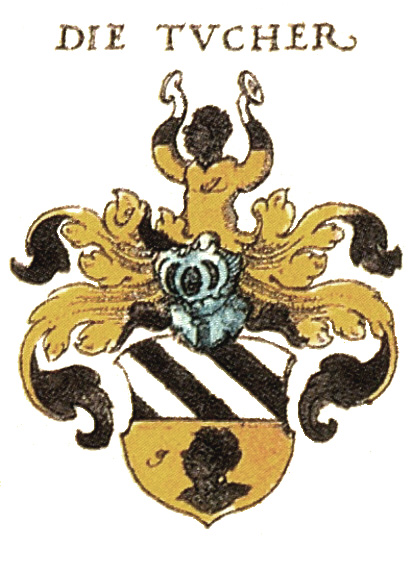
The Tucher family’s coat of arms
Image: Johann Siebmacher, Johann Siebmachers Wappenbuch. Die bibliophilen Taschenbücher 538, 2. verb. Aufl , Dortmund 1989
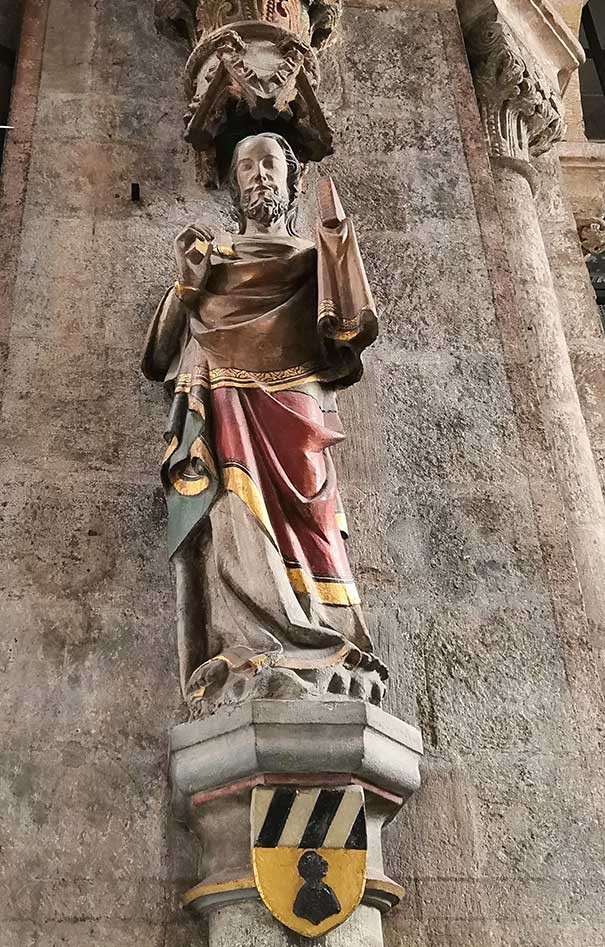
The family’s coat of arms placed on the sculpture of Bartholomew the Apostle in the Church of St Sebaldus in Nuremberg.
Image: Jana Hauguth,museenblog-nuernberg.de
St Bartholomew was also the patron saint of the German Empire. Just the fact that Konrad Tucher managed to place the family’s coat of arms on the sculpture is a sound proof that the Tuchers played an unusually significant role in the community of Nuremberg.
The list of the families who wanted to dress St Bartholomew, the patron saint of not only craftsmen but also the entire German Empire, in their own colours was undoubtedly long. However, it was Tucher and Tucher only who managed to achieve this task, which proves that he was highly influential in Nuremberg, the church and among other members of the guild of craftsmen and merchants.
Heraldry is a study of armorial bearings that assesses colours and objects placed on coats of arms, which, as a rule, are references to the families they represent. The Tucher family’s coat of arms evolved over the years, however, some elements and colours remained unchanged. The modifications were introduced not only due to the development of rules and regulations of heraldry, but also changes in the family and new historical facts. In the 17th century, heraldry specified over 10 elements that each coat of arms should contain (e.g. supporters, mantling, banners and mottoes). It was probably in that period when older coats of arms were adjusted to the new regulations.
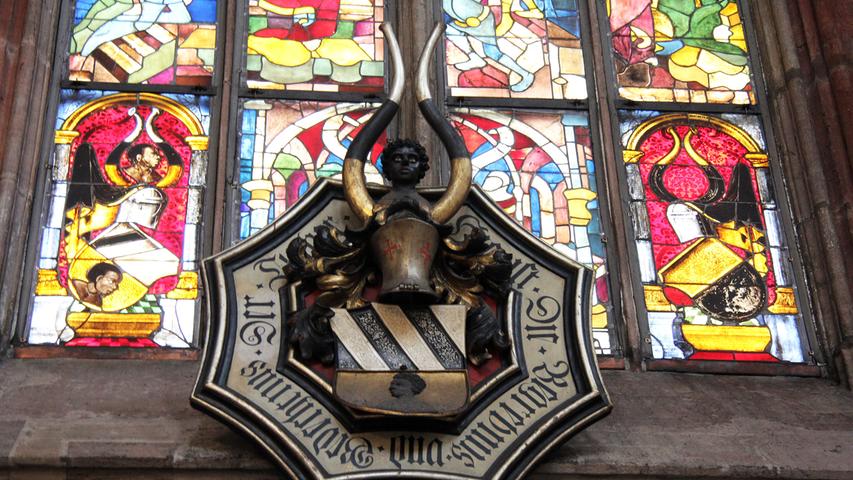
The Tucher family’s coat of arms in the Church of St Sebaldus in Nuremberg.
Image: Dominik Mayer
The colours of the original coat of arms were gold, black and silver. It contained a shield, a helmet, a saffron (according to some sources, these were feathers) and a silhouette of a Moor. Gold refers to the colour of saffron, which is one of the most expensive spices.
The Tucher family thrived due to trading saffron, among other goods. Black most probably symbolizes the countries of the Levant and North Africa since the family traded with these territories and thus developed their fortune and social status. Moors were indigenous people living in the north of Africa occupying the present territories of Algeria, Morocco and Mauretania: the regions where saffron came from. Black probably also symbolizes the Catholic religion.
The shield with the silhouette of a Moor may refer to the person of St Maurice, a centurion (head soldier) in the Theban Legion (a subunit of the Roman legions stationing on the territory of the present-day Switzerland) from the period of the rule of emperors Diocletian and Maximilian (known for their hatred towards Christians). St Maurice, being a Christian serving in the Roman legions, died a martyr’s death in the hands of Roman soldiers when he refused to make an offering to pagan gods. For his courage, righteousness and defence of his faith, St Maurice was chosen by the Emperor Otto as the patron saint of the German Empire.
The silver shield and sword symbolize courage, readiness to defend and high social status. The right to carry a sword and provide defence was bestowed only upon the nobly born. The right to place the knighthood attributes in the coat of arms most probably refers to the person of Konrad Tucher, who was mentioned earlier in this elaboration.
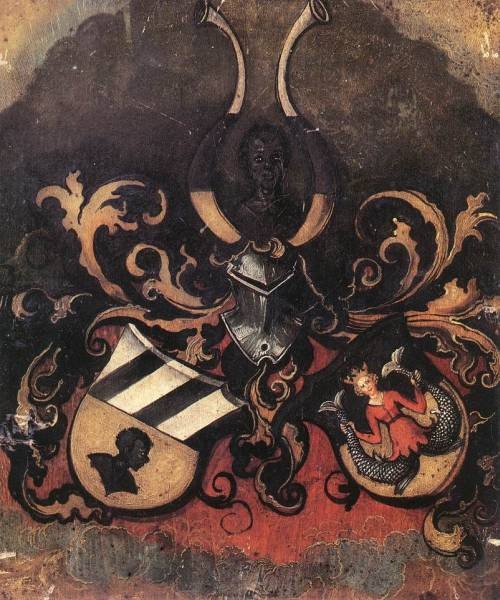
Common coat of arms of the Tucher family (left) and the Reitter family (right)
Image: Painted by Albrecht Durer
As mentioned earlier, the graphic changes in the coat of arms needed to be introduced in order to adjust it to the new heraldic regulations. Nevertheless, it should be noted that the Tucher family’s coat of arms also reflects the marriages into the family. That is probably why it also contains three ears of wheat, a goat, a fleur-de-lis, a tower and a mermaid.
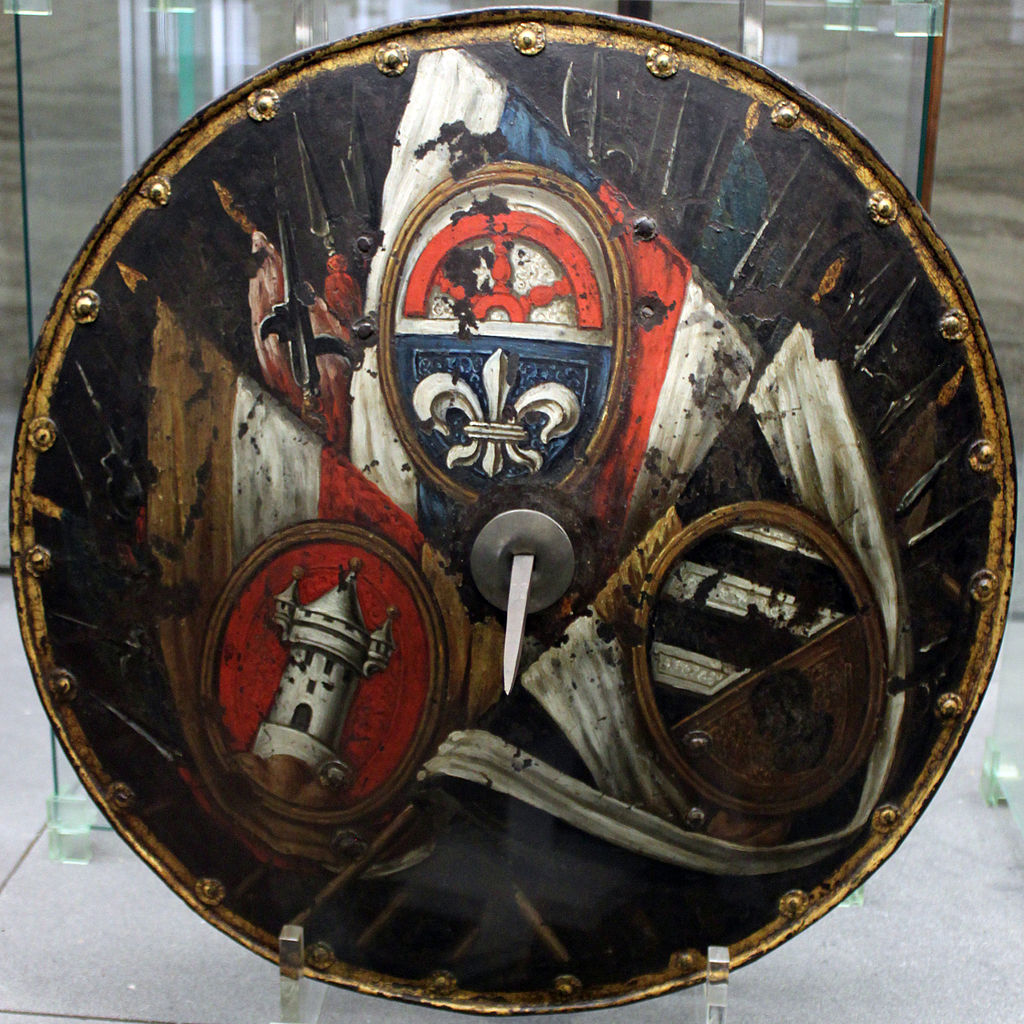
Common coat of arms of the Tucher (right), the Harstorfer (tower) and the Volckamer family (fleur-de-lis with a wheel) 1590;
Image: Anagoria, Germanic National Museum in Nuremberg
Some factions of the Tucher family gained their noble rights much earlier in a different manner, i.e. by purchasing the land to which noble rights of a Frankish knight were attached. Such estates included: Winterstein, Rüssenbach and Simmelsdorf. The title for the Tucher family of Simmelsdorf was confirmed by Emperor Leopold I by an act of 1697.
In 1815, Emperor Franz I bestowed the title of a baron to all representatives of “old Nuremberg families”. These were the families that, as of 1521, possessed an unalienable right to sit in the City Council.
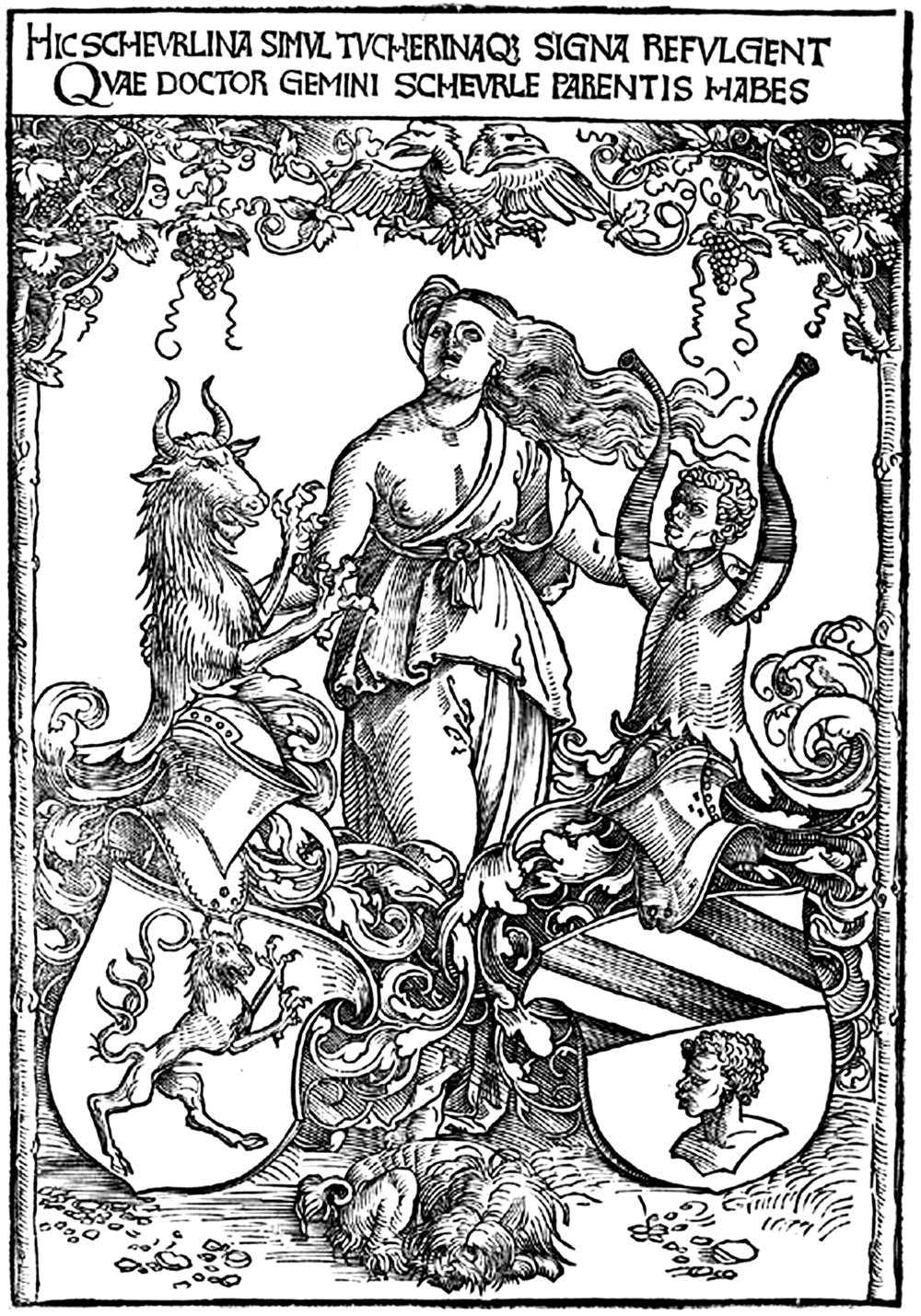
Common coat of arms of the Tucher family (right) and the Scherul family (left) used by the son of Helena Tucher and Christopher Scherul’s
Image: Attributed to: Wolf Traut , School of/style of: Albrecht Dürer, Production date 1512, The Trustees of the British Museum
In 1672, a brewery known as Stadtisches Weizenbrauhaus (the city brewery of wheat beer) was established in Nuremberg. It was the first time when wheat beer was brewed in Nuremberg. When Nuremberg became part of the Kingdom of Bavaria in 1806, the name of the brewery was changed to Konigliches Weizenbrauhaus (the King’s Brewery of Wheat Beer). Half a century later, the facility was bought by the von Tucher family, who once again changed its name to Freiherrlich von Tucherische Brauerei (the brewery of Baron von Tucher) and placed the Moor from the family’s coat of arms on the brewery emblem. The brewery functions nowadays as a joint-stock company within the Oetker holding. Some members of the Tucher family are stockholders in the holding.
In 1815, Emperor Franz I bestowed the title of a baron to all representatives of “old Nuremberg families”. These were the families that, as of 1521, possessed an unalienable right to sit in the City Council.
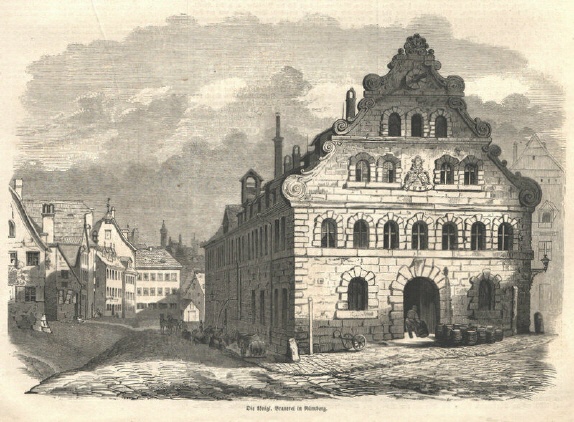
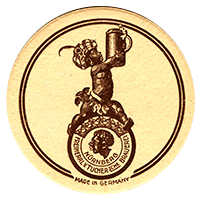
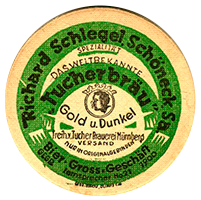
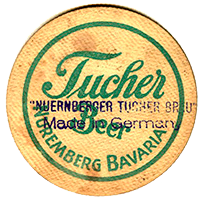
Beer produced till this day, with the head of a Moor in the logo
IMAGE: http://www.nuernberginfos.de
Economic crises affected the Tucher family as well. The increased supply of precious metals, gold and silver from the New World (colonies in South and Central America) that flooded Europe, wars fought in the 16th century and several years of poor harvest caused economic crises and inflation. As a result, the Wersels were forced to announce bankruptcy of their companies in Spain, Portugal and Regensburg. The company in Nuremberg was sold. The Tucher family did not fare much better. Just like the Wersels, Zebedee Tucher IX needed to withdraw its membership in the City Council because of the crisis. The religious division and the economic crisis of the late 16th century caused a significant fragmentation of the family. Many of its parts lost their influences and fortunes. The remaining family business was divided and focused mainly on financial services, precious stone trading, silver and copper mining as well as the brewing industry. The fragmented business was later taken over by representatives of other families, including Krupp and Siemens.
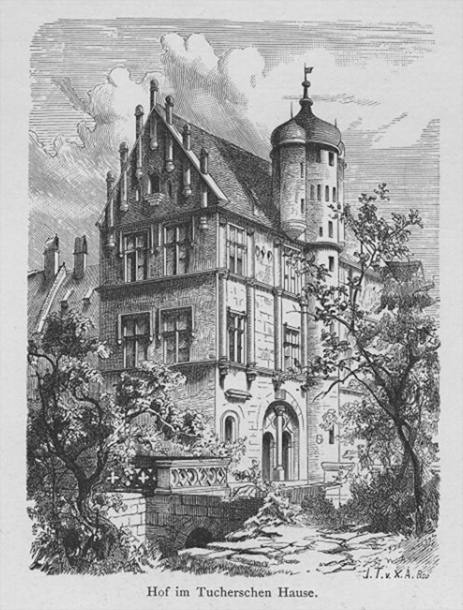
Tucherschloss castle in Happurg
IMAGE:Johann Leonhart Trambauer: Nürnberg, Tucherschloss,bavarikon.de

